Next, a short explanation of how
a mercury barometer works. A mercury barometer is used to
measure atmospheric pressure and is really just a balance that
can be used to weigh the atmosphere. You'll find a messier
version of what follows on p. 29 in the photocopied Class
Notes.
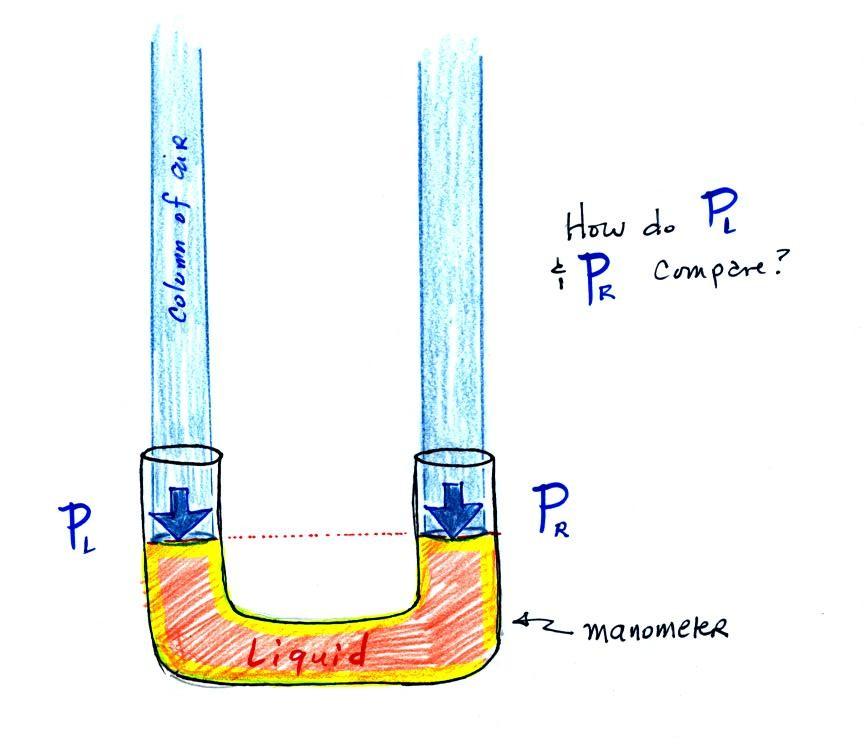 |
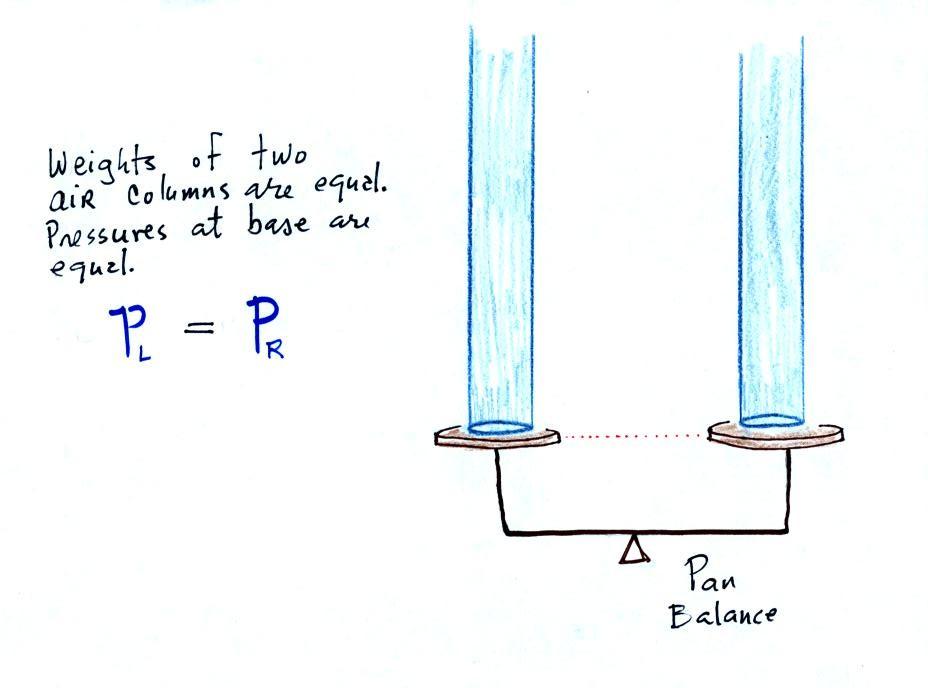
|
The instrument in the left
figure above ( a u-shaped glass tube filled with a liquid of
some kind) is actually called a manometer and can be used to
measure pressure difference.
The two ends of the tube are open so that air can get inside
and air pressure can press on the liquid. Given that the
liquid levels on the two sides of the manometer are
equal, what could you about PL
and PR?
The liquid can slosh back and forth just like
the pans on a balance can move up and down. A manometer
really behaves just like a pan balance (pictured above at
right) or a teeter totter (seesaw).
Because the two pans are in balance, the two columns of air
have the same weight. PL and PR are equal (but note that
you don't really know what either pressure is, just that they
are equal).
 |
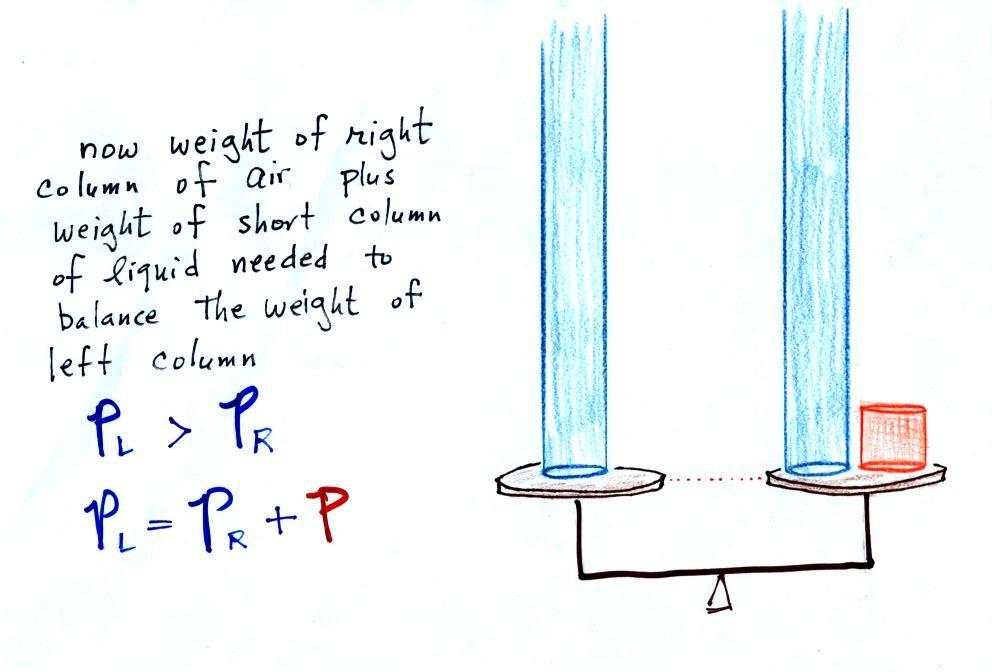
|
Now the situation is a little
different, the liquid levels are no longer equal. You
probably realize that the air pressure on the left, PL, is a little higher than
the air pressure on the right, PR. PL
is now being balanced by PR
+ P acting together. P is the pressure produced by the
weight of the extra fluid on the right hand side of the
manometer (the fluid that lies above the dotted line). The
height of the column of extra liquid provides a measure of the
difference between PL
and PR.
Next we will just go and close off the right hand side of
the manometer.
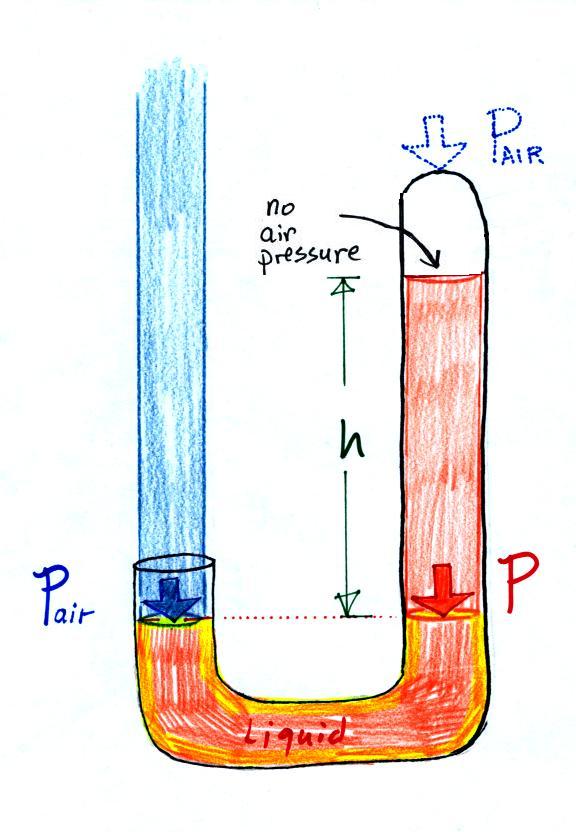
|
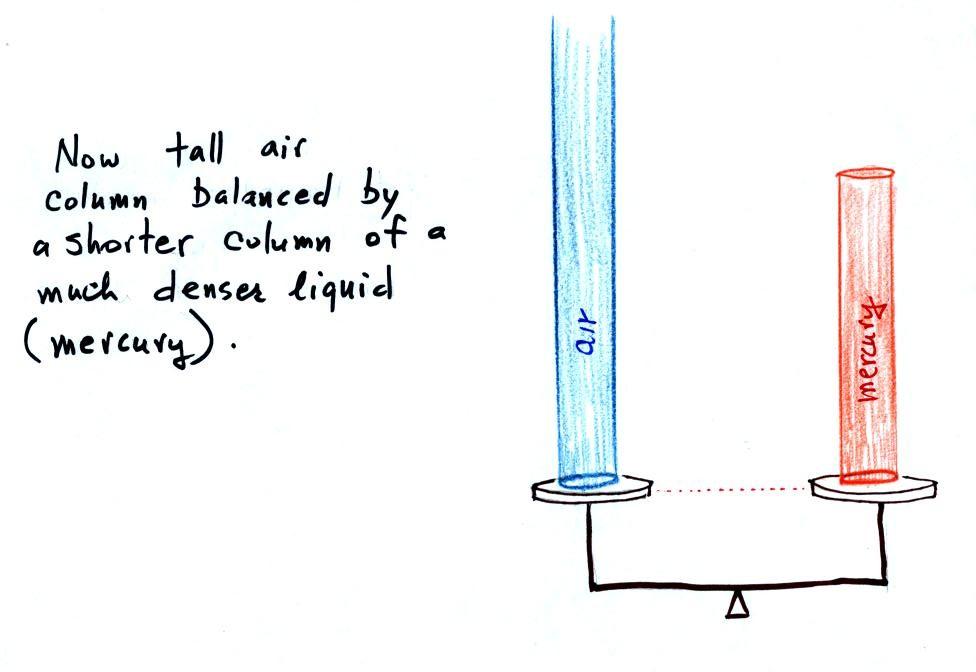
|
Air pressure can't get into
the right tube any more. Now at the level of the dotted
line the balance is between Pair
and P (pressure by the extra liquid on the right). If
Pair changes, the height
of the right column, h, will change. You now have
a barometer, an instrument that can measure and monitor the
atmospheric pressure.
Barometers like this are usually filled with mercury.
Mercury is a liquid. You need a liquid that can slosh
back and forth in response to changes in air pressure.
Mercury is also very dense which means the barometer won't
need to be as tall as if you used something like water.
A water barometer would need to be over 30 feet tall.
With mercury you will need only a 30 inch tall column
to balance the weight of the atmosphere at sea level under
normal conditions (remember the 30 inches of mercury pressure
units mentioned earlier). Mercury also has a low rate of
evaporation so you don't have much mercury gas at the top of
the right tube (there's some gas, it doesn't produce much
pressure, but it would poison you if you were to start to
breath it).
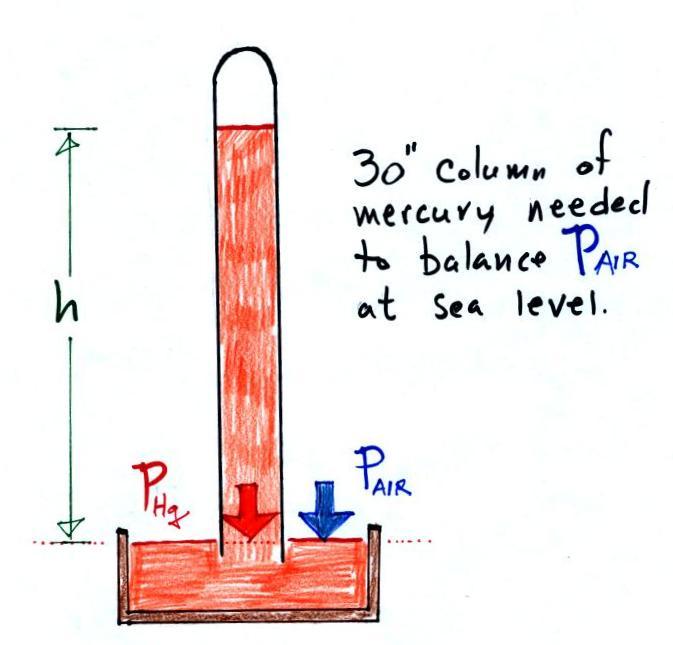

Average sea level
atmospheric pressure is about 1000 mb. The figure
above (p. 30 in the photocopied Class Notes) gives 1013.25
mb but 1000 mb is close enough in this class. The
actual pressure can be higher or lower than this average
value and usually falls between 950 mb and 1050
mb.
The figure also includes record high and low pressure
values. Record high sea level pressure
values occur during cold weather. The TV
weather forecast will often associate hot weather with high
pressure. They are generally referring to upper level
high pressure (high pressure at some level above the ground)
rather than surface pressure. There is
some debate about the 1085 mb pressure value measured in
Mongolia. The problem is that the pressure was
measured at over 5000 feet altitude and a calculation was
needed to figure out what the pressure would have been if
the location were at sea level. That calculation can
introduce uncertainty. But you don't really need to be
concerned with all that, I just wanted to give you an idea
of how high sea level pressure can get.
Most of the record low pressure values have all been set
by intense hurricanes (the extreme low pressure is the
reason these storms are so intense). Hurricane Wilma
in 2005 set a new record low sea level pressure reading for
the Atlantic, 882 mb. Hurricane Katrina had a pressure
of 902 mb. The following table lists some of the
information on hurricane strength from p. 146a in the
photocopied ClassNotes. 2005 was a very unusual year,
3 of the 10 strongest N. Atlantic hurricanes ever occurred
in 2005.
Most
Intense North Atlantic Hurricanes
|
Most
Intense
Hurricanes
to hit the US Mainland
|
Wilma
(2005) 882 mb
Gilbert (1988) 888 mb
1935 Labor Day 892 mb
Rita (2005) 895 mb
Allen (1980) 899
Katrina (2005) 902
|
1935
Labor Day 892 mb
Camille (1969) 909 mb
Katrina (2005) 920 mb
Andrew (1992) 922 mb
1886 Indianola (Tx) 925 mb |
Note that a new all time record low sea level pressure was
measured in 2003 inside a strong tornado in Manchester, South
Dakota (F4 refers to the Fujita scale rating, F5 is the highest
level on the scale). This is very difficult (and very
dangerous) thing to try to do. Not only must the
instruments be built to survive a tornado but they must also be
placed on the ground ahead of an approaching tornado and the
tornado must then pass over the instruments (also the person
placing the instrument needs to get out of the way of the
approaching tornado).
You can experience much larger changes in pressure if you move
vertically in the atmosphere than you would ever be able to do
at sea level. Pressure in Tucson at 2500 feet altitude is
routinely about 920 mb; it's even lower, about 700 mb, at the
top of Mt. Lemmon. The only place to experience 920 mb
pressure at sea level would be in the middle of a strong
hurricane. Pressure never drops to 700 mb at sea level.












